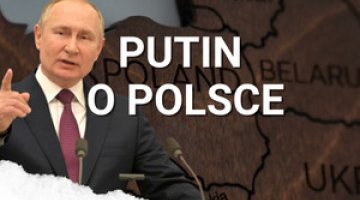Russia’s attack on Ukraine: day 60

The Orthodox Easter did not affect the pace and nature of the military struggle. Minor shifts in favour of the aggressor occurred in the south of the Kharkiv Oblast (Dibrovne in the direction of Barvinkove) and in the north of the Donetsk Oblast (Zarichne in the direction of Sloviansk). However, the positions of the parties in the Donbas and Kharkiv oblasts remained unchanged – the defenders repelled hostile attacks and inflicted losses on the enemy. Russian artillery and aviation continued to strike military and civilian targets in the combat areas (including the coke-chemical complex in Avdiivka), as well as in Zaporizhzhia Oblast and on the border of Kherson Oblast with Mykolaiv and Dnipropetrovsk oblasts. The aggressor’s artillery also shelled the border regions of the Sumy Oblast.
The invaders launched a succession of missile strikes across Ukraine and, as in Odesa on 23 April, in addition to military facilities, residential buildings were also destroyed. The targets of the attacks were plant and railway facilities in Pavlohrad in Dnipropetrovsk Oblast and Kremenchuk in Poltava Oblast (thermal power station and – again – a refinery), as well as five railway stations in the centre and west of the country (Krasne in Lviv Oblast, Zhmerynka and Koziatyn in Vinnytsia Oblast, two facilities in Rivne) – at least 16 passenger trains were stopped in the aftermath.
Ukrainian military sources have reported that the enemy is having great difficulty in providing medical security for units, mainly in terms of evacuating the wounded and supplying medicine. The occupied territories are to be comprehensively exploited – the Russians are organising conscription for the occupation forces and requisitioning civilian vehicles and agricultural equipment for the army, which may indicate great problems in replenishing personnel and equipment.
Commander-in-Chief of the Armed Forces of Ukraine General Valerii Zaluzhnyi once again urged users of social networks to refrain from publicly assessing combat operations, logistics, security and decisions of commanders. He noted that only the military leadership has full information, and he considered unofficial reports appearing in the public space about the Ukrainian army as serving the enemy.
Fortification works are underway in Kyiv, in fear of a Russian offensive. Public transport routes and logistical supply chains are being restored. Emergency services are removing debris and sappers are neutralising unexploded ordnance (886 have already been destroyed). Public shelters are being modernised (815 of them are equipped with internet connections).
In the occupied settlements of the Kharkiv Oblast, the invaders are installing the communications infrastructure of the Russian mobile operator MegaFon, introducing roubles into circulation as compulsory means of payment, and urging residents to go to Russia, where food and medicine can be purchased. Soldiers and FSB officers are trying to demoralise the local population by spreading information that ‘it was Ukraine that cut off the electricity supply to the settlements’ and that ‘Kharkiv is under Russian control’. According to Ukrainian military intelligence, the inhabitants of the occupied territories are massively refusing to accept ‘help’. From Vovchansk in the Kharkiv Oblast, the aggressors took away the instrumentation of the aggregate factory, and in the vacated buildings they organised a makeshift prison.
In Kherson, a large column of people is trying to leave the city – they do not want to take part in the so-called referendum intended to give a pretext for the creation of the so-called Kherson People’s Republic – but the Russians are preventing them from leaving. In the city of Dniprorudne in the Zaporizhzhia Oblast, a collaborationist ‘people’s militia’ has begun to operate.
According to the Ukrainian Prosecutor’s Office, 5.7 thousand Ukrainians were forcibly resettled to occupied territories or to the Russian Federation, and these figures do not include Mariupol. The number of deportees from this city is estimated at 33 000 (the Russians speak of 134 000). The forced relocation of 200 Ukrainians to Belarus is under investigation. The occupiers were to deport 308 people, including 90 children, from Mariupol to Vladivostok. The plan is to settle them in the villages of the Primorsky Krai.
On 24 April, the Russians once again refused to allow the opening of a humanitarian corridor from Mariupol and rejected the possibility of ceasing the shelling. The authorities in Kyiv estimate that there are, among others, about 1,000 women and children and more than 500 wounded in the besieged and shelling Azovstal metallurgical plant. Adviser to the head of the President’s Office Oleksiy Arestovych announced that Ukraine had offered the Kremlin to exchange Mariupol defenders for all Russian prisoners of war. He added that Kyiv hopes for an immediate ceasefire and the provision of humanitarian corridors. So far, the offer has gone unanswered. President Volodymyr Zelensky reiterated that the annihilation of Mariupol defenders would be tantamount to Ukraine withdrawing from all negotiations with Russia. He added that the talks would also be broken off if the opponent organises pseudo-referendums on the creation of so-called people’s republics on the occupied territories.
The presidents of Ukraine and Turkey discussed by telephone possible security guarantees for Ukraine and the prospect of continuing negotiations. According to the Ukrainian Prosecutor General’s Office, between 24 February and 25 April, 3,818 civilians were killed and more than 4,000 wounded in the country (figures do not include Mariupol).
Secretary of State Antony Blinken and Defence Secretary Lloyd Austin were in Kyiv on 24 April. During their visit they met with, among others, President Zelensky, Prime Minister Denys Shmyhal and Defence Minister Oleksii Reznikov. The main topic of discussion was the increase in military aid (an additional $322 million for the purchase of armaments).
On 23 April, Poland and Ukraine signed a memorandum on expanding cooperation in the railway sphere. The document envisages the establishment of a joint company which will operate export connections with western markets. Ukraine is also in dialogue with Latvia on the use of their ports for the export of agricultural produce.
According to the Polish Border Guard, 2.94 million people have left Ukraine for Poland since the beginning of the war, and only on 24 April – 9.8 thousand (a decrease of 35% compared to the previous day). The border in the opposite direction was crossed yesterday by 11.8 thousand travellers, while since 24 February – 860 thousand.
Commentary
- The Armed Forces of Ukraine have successfully slowed down the enemy’s offensive for another 24 hours in the most sensitive area at the junction of the Kharkiv, Donetsk and Luhansk oblasts. The authorities in Kyiv, after announcing the launch of a new Russian offensive on 18 April, have now returned to their earlier rhetoric and stress that the aggressor’s massive strike in the east has not yet taken place. Information appearing in Ukrainian and British military broadcasts suggests that the invading army is still struggling to develop a sufficiently large force, and thus to develop an advantage to quickly break through Ukrainian defences. If these reports are credible, then the Russian army will not be able to achieve any significant territorial success not only before 9 May, but at all, unless there is a complete change of strategy in the conduct of both operations and mobilisation (currently participation is formally voluntary). How long the Mariupol defenders sheltering in the Azovstal compound can survive remains a separate issue.
- The aggressor’s forces are continuing the process of ‘Russification’ of social life in the occupied localities – for example, they are gradually installing the infrastructure of Russian telecommunications operators, and forcibly introducing the rouble into circulation. The propaganda tasks aimed at imposing Russian historical policy are being carried out at an accelerated pace, particularly those elements of it which bring back the memory of the so-called Great Patriotic War and the fight against the opponents of the Soviet system. The occupying power continues to organise the deportation of Ukrainian citizens to Russia in order to purge the occupied territory of, among other things, local activists.
- Since the outbreak of the war, Poland has been a key logistical hub for the delivery of humanitarian aid to Ukraine and the main route for the country’s exports. The biggest challenge facing Kyiv is to quickly find an alternative to the Black Sea and Sea of Azov port services, which have accounted for more than two-thirds of exports. The creation of a Polish-Ukrainian railway company should lead to the simplification of logistics and, consequently, to an increase in goods exchange via this route.





